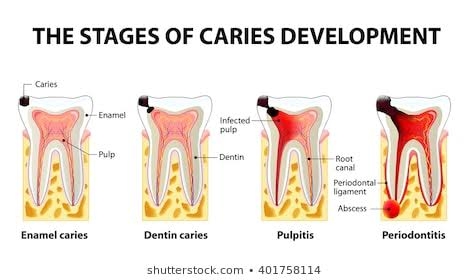
2020-09-02T16:37:39
What Is a Dental Cavity? A cavity or hole in the tooth is caused by tooth decay or damage portion of a tooth. Decay can affect the outer white layer of a tooth (called enamel) or entire tooth. Cavity Signs and Symptoms The symptoms of a dental cavity will depend on how large it is. You may not feel any symptoms initially. But it’ll get worse as the cavity gets larger, including: Pain or a toothache that happens at any time without any warning. Tooth Sensitivity Pain when you eat or drink sweet, hot or cold stuff Food lodgement Causes When foods stay on your teeth, then bacteria in your mouth turn them into acids. The bacteria, acid, food debris, and your saliva combine to form plaque, which clings to your teeth. The acids in plaque dissolve the enamel, creating holes called cavities. Treatment Depends on how deep the cavity is. Most often, the dentist cleans the decayed portion of tooth. Sometimes dental x-ray or IOPA is required to check the depth of dental cavity. There are a few options to restore the tooth: Filling or Restoration Dentist fill the hole with a dental material like dental cements or tooth colour composite resin. These are biocompatible materials. Crowns. It is used when a tooth is badly decayed. Repair the damaged part, then fit a crown or cap made from gold, porcelain, or porcelain fused to metal over the rest of the tooth. Root canal Sometime root canal is needed if the decay reaches the pulp or inner layer of tooth or if pain is severe. You may need a crown after root canal Or RCT.

